Let us explore some of the basic Physics principles behind Ice Skating.
Physics of Ice Skating
Let’s begin with the basics. For starters, skates perform two functions:
- Slide over ice.
- Push ice away from your path with blade edges in contact with it.
These two functions work in synchrony and produce speed movement. With consistency, you can pass the first lesson of basic ice skating.
Next, the phenomenon of ice skating comes into existence because of one fundamental fact: negligible to zero friction.
One of the many theories suggests that the ice has a thin layer of moisture over which it lowers the friction against the skates acting.
Also, the thin layer allows the skate blades to dig into it, which creates the non-existing friction and makes it possible to make motions like go forward, backward, take a u-turn, or come to a complete stop.
Now, there are two directions in which you can move: Onward and Rearward.
The working of physics is similar except for the direction when these two routes are compared.
Onward Motion of Skates
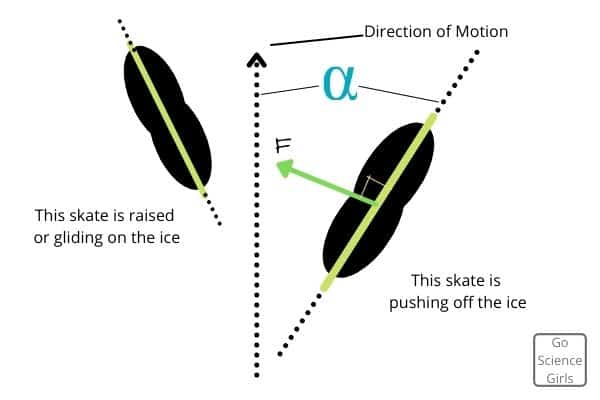
Since there is no frictional aid, the skater will have to apply force to their rear leg first (your dominant one) and push onward.
The force ‘F’ applied is perpendicular to the skate blade.
Force is a vector product, meaning it has two components acting in two different directions perpendicular to each other.
Among the two, the component in the direction of onward motion and perpendicular to it is responsible for actual movement forwards (green line).
The skates are now in motion, but to continue it, again, external force must be applied. The front leg (your non-dominant one) performs the same actions as the rear leg and maintains continuity.
Note: when one leg is under force and motion, the other is either not in contact with the ice or just slides over the ice without any external force.
While the force acts upon either of the legs, simultaneously, the angle with which the leg performs the two basic functions (sliding and pushing ice off the skate blade edge) determines the speed of motion.
More the angle between the component, which is not in the direction of onward motion and parallel to the skate blade, and the direction of onward movement, more is the speed.
Thus, the skate blade edges are placed more outward as you keep moving onward to increase the speed slowly.
Rearward Motion of Skates
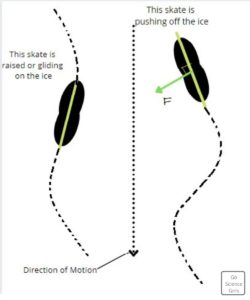
This is similar to ‘Onward,’ in its working, save the direction.
The direction of force components and angular aspect is the same as onward. ‘Rearward’ has a distinct ‘S’ pattern, which is not the case onward. The differences are, however, three.
The first is that, in rearward movement, the skate blades never leave the ice. Unlike onward, they are always in contact with it, where either of the legs is in contact at one instance.
The second is that the force applied by the skater to move backward is less compared to the force applied when moving forwards. This hinders the speed, and so rearward motion is slower to onward.
The third and last is that the skate blades are placed inward in contrast to the outward of onward.
Mechanics of Ice Skating
Velocity
The velocity of the skater with which it moves onward or rearward is relative to ice. It cannot be measured solely. It also depends on the component of force applied in the direction of motion. If this force is more, more is the velocity.
For example, a skater starts moving with a velocity of 10 m/s from complete rest. Then the velocity relative to ice is 10 m/s. However, if after some time, it slows down to 8 m/s, then the relative velocity to ice is said to be 2m/s and not 8 m/s.
When the relative velocity is measured in the second case, the skater is already in motion and does not initiate from 0 m/s, i.e., rest. So, for the second case, the initial velocity is 10 m/s, and the final velocity is 8 m/s, the difference of which is 2 m/s is taken as the relative velocity to ice.
Balance
When skating, two types of forces act on the skater –
- Torque (a force that results in rotation) – caused because of the component of the force acting in the direction of motion (onward/rearward).
- Air Resistance – caused because of motion against the natural direction of air.
To maintain balance by acting in contrast to the above two, a skater crouches/bends/leans forward. This results in the below –
- Counter-torque – is produced, nullifying the torque produced by the motional force and preventing falling/tipping (backward in onward motion/forward in rearward motion).
- Accelerated speed – as the frontal area exposed to air is reduced.
Turns (specific to Speed Skating)
What is speed skating without any turns? Turning during a race is crucial, and for a perfect turn without any delays and fumbling, it revolves around two aspects –
- Lateral distance between skates.
- Speed.
These act as derogatory to each other. If the lateral distance between the skates is decreased, this aids in easier steering and increased speed.
On the other hand, if the lateral distance is increased, which is not recommended as it hinders the lean of the acting centripetal force (see below) and makes turning hard, the speed is decreased.
Equations for Ice Skating
Supposing a speed skater, the following are the equations involved in the physics and mechanics of Ice Skating.
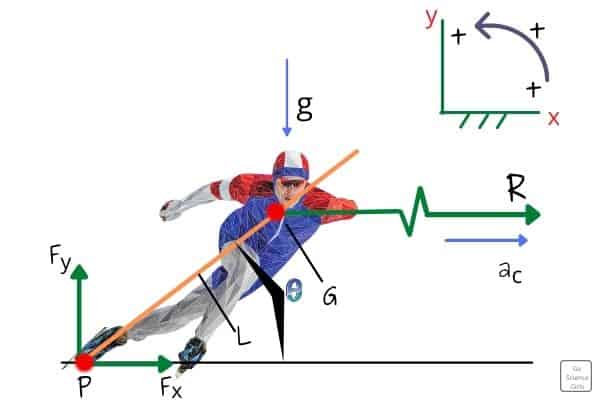
Where, g is gravitational acceleration (9.8 m/s2).
G is center of mass (skater + skates).
P is the point of contact between skates and ice.
L is the distance between P and G.
Fx is the horizontal component of force (in the direction of motion and perpendicular
to it).
Fy is the vertical component of force.
R is radius of turn (distance between center of turn to G).
Some of the formulae are mentioned below for respective calculations –
Acceleration (ac)-
This is centripetal (towards the center) in nature, hence called ‘Centripetal Acceleration.’
Represented by –
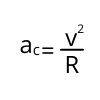
Where, v is velocity of G and away from it.
Force in Horizontal Direction (Fx)
This is the component of force that acts in the direction of movement (onward/rearward). It is responsible out of the two in pushing the skater.
Represented by –
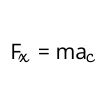
Where, m is the mass of skaters and skates.
Force in Vertical Direction (Fy)
This is the component of force that is not responsiblefor pushing the skater forward. Here, it is equal to zero because G has zero vertical acceleration, and so the resultant sum is zero.
Represented by –
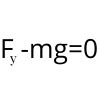
Where, g is gravitational acceleration.
- Combining all of the above equations, a composite formula is –
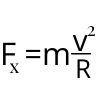
Angle of Lean
It determines the angle between the ice surface and G of the skater and the skates.
Represented by
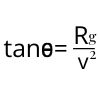
Figure Skating
Physics of Figure Skating
Friction
A simple opposing force is said to be friction, and the energy produced between two bodies moving against each other in direction and force is dissipated. The energy is the result of temporary bond-forming at contact and bond-breaking at non-contact.
In figure skating, the friction is less because skates on a flat surface do not have any opposing force due to the absence of a rugged exterior.
Though it has been mentioned several times that friction in ice skating is negligible to zero, it has two types of friction.
However, these arise only when you have been skating on the ice for a longer time, and so, the ice layer has considerably melted, increasing the amount of thickness of the liquid water layer.
Also, the friction produced is not too strong to completely oppose the skater against its direction of movement, yet not too weak to just let the skater move however they like.
It is in moderation. Hence it enables the skater not to move, not to run, but to glide over the ice.
Two Types of Frictions are –
- Static Friction – occurs between two bodies not moving in relation.
- Dynamic Friction – occurs between two bodies moving in relation.
Static friction acts initially due to less liquid water layer on the ice, hence minimal amount. As you continue skating, Dynamic friction comes into play due to a more liquid water layer on ice.
Ploughing
It means the act of moving or pushing through something while applying a considerable amount of force. Friction also acts in this movement as an opposing force to the action of ploughing.
Increasing the temperature, the radius, and hardness of the third body molecules decrease, increasing the ploughing force. However, these conditions require a constant sliding force to be maintained.
Ploughing affects the pace of the skater as follows –
- Higher speeds – blades are aligned in the direction of motion, radius of curvature (distance between the center and a point on the circumference of a circle) increases, ploughing lowers, lower coefficient of friction.
- Lower speeds – blades are tilted, deeper digging, higher ploughing, higher coefficient of friction.
Forces (F)
‘Unbalanced Forces’ are forces that have a difference in them. Figure skating relates to the different forces exerted by the skater and the skates they are using.
Due to them being unbalanced, the resultant force acting drives the skater along with its skates, forward or backward.
If they had balanced forces, the resultant force would have been zero, and there would be no motion occurring.
Cumulative of both the unbalanced forces, the direction is taken of the resultant force and not their individual directions.
If the skater is already in motion, then speed increases if the resultant direction is the same as the previously moving direction; if not, i.e., if the resultant direction is not the one previously moving on, then the speed decreases.
These are also assisted by a slightly forward mass balancing skating stance.
Momentum (Spins)
Spins are the vital as well as the most adrenaline-producing parts of a performance routine. It encompasses the true beauty of figure skating by embodying the physical concepts of momentum.
By definition, ‘Momentum’ is ‘the mass and velocity product used to measure a motional body.’ An alternate definition of momentum concerning figure skating would be ‘the amount of force necessary to stop an in-motion body’.
The more the mass of the moving body, the more momentum is needed to stop its movement.
Momentum always remains constant and conserved in a system of one body or more than one body. It only changes on the instigation of external force.
A variation of this is ‘Angular Momentum (L)’, which is the actual form of momentum participating in spinning.
A Case Study
A female figure skater rotates during twirls, and an angle is introduced to the process. This depends on the below two facets –
- Speed of rotation
- Weight and distribution of Centre of Mass
The figure skater spins with increased speed when her hands are tucked in; conversely, she expands her hands, where a decrease in speed is observed.
Elucidation of how speed and mass affect angular momentum is less the distribution of mass; more is the speed and vice versa.
For the same female figure skater, the number of spins depends upon –
- Angular Velocity – speed produced by angular momentum.
- Rotational Inertia – the amount of center of mass taking part in the spin due to angular momentum.
(These two are variations of the above two factors, introduced after angular momentum comes into the picture).
When the same female figure skater is at rest, she has a certain angular velocity and rotational inertia.
When she sits down and brings her legs closer to the body to start spinning, her rotational inertia decreases, and angular velocity increases.
This dip of one to rise another occurs to preserve the property of conservation of angular momentum.
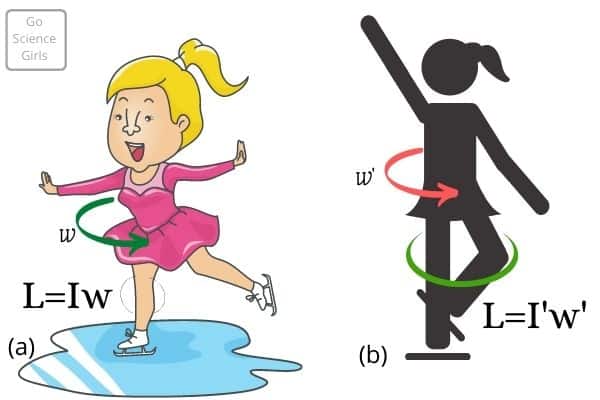
Another Case Study
In a duet, out of the two bodies engaged, of the same speed of rotation and same weight and distribution of the center of mass, the one with more mass extends in space than the other and will have greater angular momentum.
Centripetal Force (Death Spiral)
To understand ‘Death Spiral,’ one must first learn what is ‘Centripetal Force.’ It is the force acting on a body when that body is in rotation around a fixed point.
It is directed inward and traces a circle around the fixed point. Since it’s a circle, the velocity produced due to rotation acts tangentially to the traced circle.
Example: A ball tied at the end of a string. The one rotating the ball is the fixed point creating a centripetal force that maintains the ball’s rotation.
If the string breaks accidentally, the ball will not continue to move in a circular motion; instead, it flies away tangentially to the field of the circular orbit.
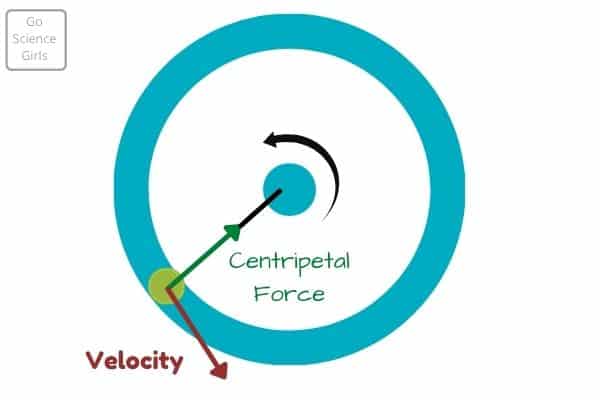
Ice Skating Duet – Case Study
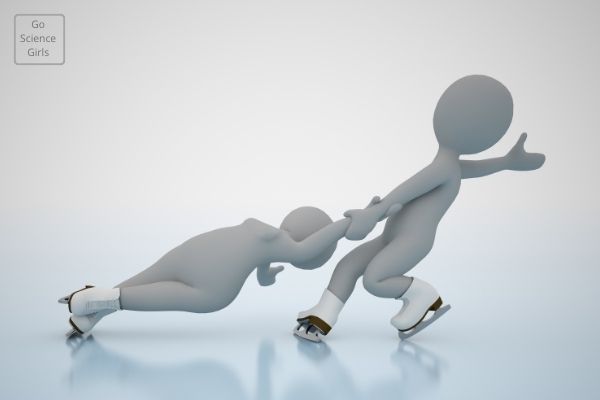
In a duet, the man is the fixed point, and the woman is the rotating body. The man has to produce enough centripetal force, which is attained by him applying force on his toes and digging into the ice surface to maintain the proper orbit of rotation of the women.
It should not be too little or too much, which may disrupt the smooth rotation. Also, the velocity of the woman should be within which the centripetal force produced by the man may handle.
Otherwise, the women may break hold from the man, suffering injuries.
It is one of the most challenging moves to be performed, only executed after tons of practice and formation of trust-bond between the two partners.
Newton’s Laws
All three ‘Newton’s Laws’ are involved in the entire process of figure skating.
First Law
Based on the first law, i.e., “A resting object will stay the same until unless an external force is applied, and a moving object keeps on moving until unless an external force is applied either to stop the continuing motion or increase the speed or change the direction of the action already occurring”, explains that a skater cannot move onward or rearward until and unless an external force, that is the pushing of your rear leg first and the front leg next in a continuous rhythm to maintain the speed and to apply a greater amount of force to increase speed further.
The skater may be at rest or in motion, and in both cases, an extra amount of force is to be applied than the usual cases with Newton’s first law (also called the law of inertia, which tends to remain at rest) acting on them.
This is because, as mentioned above, the friction working during figure skating is negligible to zero, which is not the case in the typical examples.
Hence, the need for more than usual force, explicitly in Figure Skating.
Second Law
The statement of the second law is, ‘An external force acting on an object, whether in rest or motion, is equal to the product of that object’s mass and acceleration’. The application of this law to figure skating corresponds to the following explanation.
When a skater starts to move from rest or is already in motion then, the force exerted by them to move either onward or rearward depends on both the skates’ and skaters’ mass and acceleration. More precisely, the product of this mass and acceleration gives the amount of external force acting.
Third Law
The third law of ‘A reaction force mandatorily accompanies every action force applied.’ implies the simple occurrence of the skater applying force on the surface of the ice to move forward and the ice, in turn, replying with a force of itself. This to and fro of force is what allows the skater to initiate movement.
The friction is not to be neglected in the tug-of-war between the skater and the ice. It does take part in the skater’s motion and lets them glide instead of an abrupt forward or backward movement, but a smooth sliding.
Mechanics in Figure Skating
The mechanics of Figure Skating are the same as ice skating except for the addition of ‘Clap Skates.’ These are mandatorily affixed to the skaters as figure skating requires a unique set of artistry skills.
Balance
To aid in the complex maneuvers of Figure Skating, ‘Clap Skates’ are hinged to the skate blades, one to each skate.
These are also used in ‘Speed Skating’ as it also requires an extra balancing element to avoid tipping or falling and save from procuring any injuries.
Clap Skates are fixed at the heel of the skate. It is sandwiched between the heel and the blade.
This mediator prolongs the contact time of the skates to the ice and thus allows a better distribution of energy for efficient and effective natural and specific ankle-dependent moves.
Impact of Temperature
The optimum temperature set in usual ice rinks is -7℃. This must be maintained to uphold the quality of the ice rink and not cause any fatalities due to sudden ice breakage.
The coefficient of friction is dependent on the temperature of the ice floor.
An ice rink for figure skating is softer, meaning maintained a little above 20℃. This is because, at higher temperatures, the ice is not rigid, meaning provides greater friction than when it is hard.
Soft ice is precisely for the jumps, spins, and lifts of a figure skating routine.
Impact of Sliding Speed
Sliding Speed refers to the speed of the skater over the ice surface. When this increases, the third body layer between the skates and the ice surface takes the weight of both the contact surfaces to some extent.
However, when the speed is further increased, the third body transforms into a sole layer between the contact surfaces and increases the friction to a greater extent.
Why Are Sharp Skates Better for Speed?
A straightforward explanation involves the below two points –
- Cut deeper into the ice providing more resistance to the momentum produced during movement.
- Lesser surface area, less friction to resist.
Ice Skating is indeed an act to marvel at. A figure skater’s performance encompasses true beauty and captures the audience’s eyes in a captivating trance. Little does the audience know that what they are gaping at has a strong background in physics.
These concepts may be difficult to understand, but with an open mind and a zeal to learn new things, you will know them like the back of your hand.
The creation of ice has fulfilled its true purpose of giving life to the close-knit relation of ice skating and physics.
